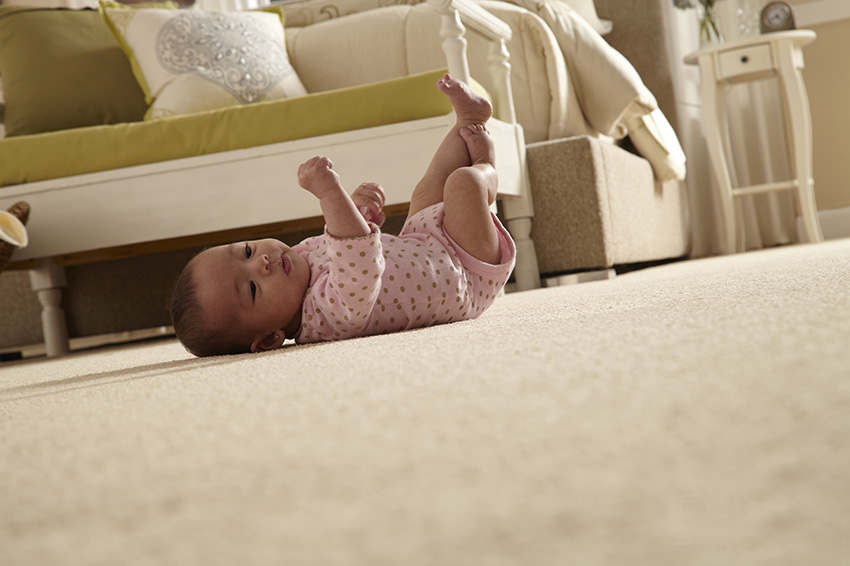The two main health issues that seem to affect a person’s decision on floor coverings are allergies and asthma, and both of these health issues are influenced by the quality of air we breathe. Wool carpets act as a natural air filter, trapping allergens such as dust and pollen and keeping them out of the breathing zone.
Allergens produced by dust mites can trigger asthmatic and other allergic reactions. The good news is: dust mites do not feed on wool, relying mostly on dropped skin flakes. Wool acts as a natural filter, trapping allergens in the pile, away from the breathing zone. Vacuuming controls the build-up of the mites’ food source and their allergens.
Because most wool fibers are too long and too thick to be inhaled, wool carpet will not irritate the respiratory system or cause sneezing and other unpleasant allergic reactions. The materials used to make wool carpets are carefully selected to ensure that they present minimal health risks, making them perfect for those who suffer from allergies or asthma.

The most common single cause of asthma is sensitivity to house dust, or more precisely to the dust mite, and particularly its waste products. But there is no reason why asthmatics shouldn’t enjoy the comfort and aesthetic pleasure of wool carpet. In fact, not only are carpets inhospitable for dust mites, but wool carpet is especially resistant.
Wool’s long, coarse fibers cannot be inhaled and therefore do not affect asthma sufferers. So as long as the air is dry, the ventilation good and the cleaning regular and thorough, asthma sufferers can breathe easy with wool carpet!
Research performed by the German Applied and Experimental Allergy Research Association (GAF) showed that when wool and nylon carpets were compared for dust mite populations, the wool carpet performed best in resisting dust mite infestation. Dust mites feed on human skin flakes and live mainly in mattresses and similar warm, dark places. Bed-making sends dust mites airborne causing them to be found in floor dust, mainly in bedrooms.
To the dust mite, carpets are a hostile environment: too cold, too dry, too exposed to the light and too regularly cleaned. Since carpets, unlike smooth floor coverings, hold dust in their structure, dust mites will be removed by vacuum or wet cleaning.
Dust mites cannot live on wool carpets. They eat flakes of human skin. Wool carpets generally contain very low levels of permethrin, a naturally occurring substance that kills very small insects. Installing a wool carpet is a very good thing to do if there are asthma sufferers in your home.
By their very nature, wool carpets and rugs are good for the indoor environment. That’s because wool, unlike synthetic fibers, rapidly absorbs common contaminants in indoor air like formaldehyde, nitrogen dioxide and Sulphur dioxide. Not only does wool keep the air free of many harmful pollutants, it will not re-emit them, even when heated. In fact, it has been estimated that wool carpets can continually purify indoor air for up to 30 years!
Tips for preventing asthma:
- Discard old and dirty mattresses, bedding, pillows and furnishings.
- If possible, sleep with windows open to reduce the amount of moisture in the bedroom (for breathing).
- Reduce the room temperature and thickness of bedding to reduce perspiration.
- After you get up, air the bed with the windows open. Electric blankets also create a dryer environment.
- Avoid placing potted plants, flowers and other sources of moisture in bedrooms.
- For children who suffer from dust mite allergy, regularly freeze soft toys for 72 hours, then wash.






 Prelude Version 2.1
Prelude Version 2.1